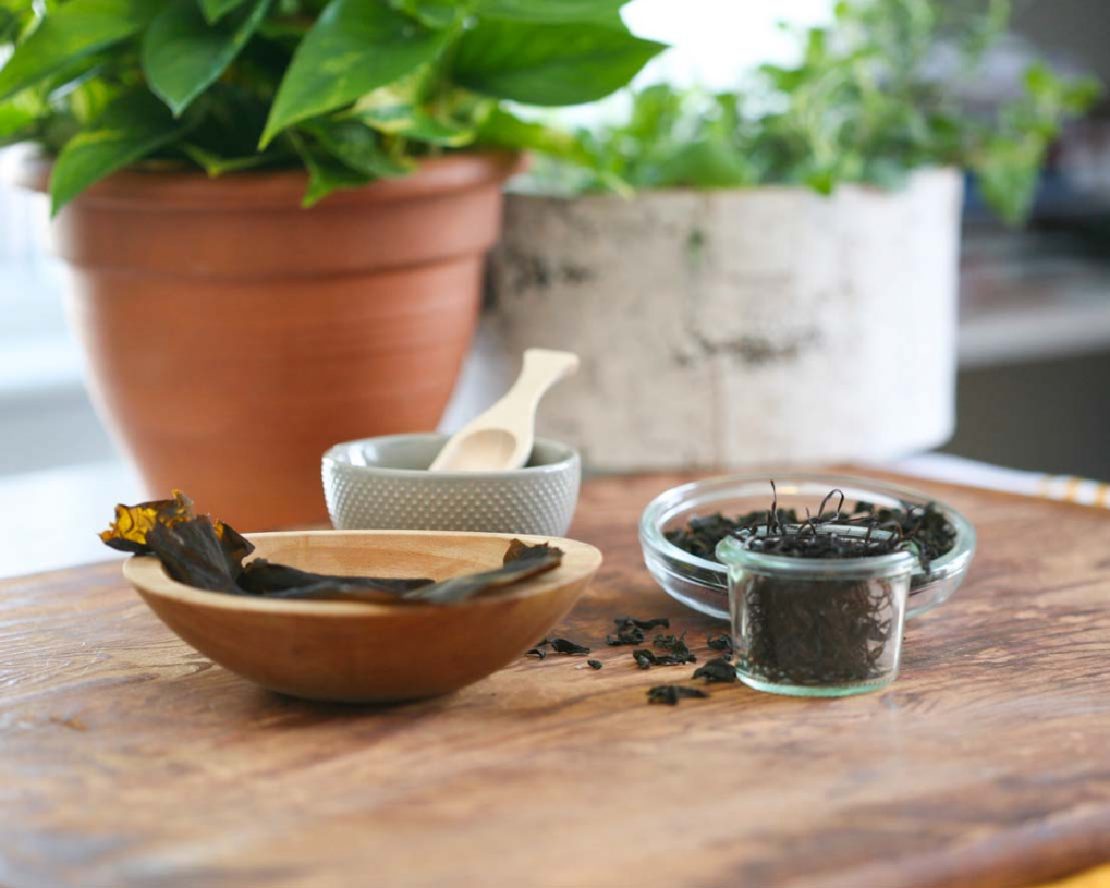
How to Source Sustainable Seaweed
Seaweed has been farmed in Japan since at least the 17th century (“Seaweed Farming”, n.d.), when farmers cast bamboo branches into shallow waters where seaweed spores would collect. But its use as a food source stretches back much further, with archaeologists discovering that the coastal people of Monte Verde, Chile harvested and consumed seaweed as early as 21,000 BC (Szabo, 2018). Sustainable seaweed has played an important role in indigenous communities living in coastal regions of Australia, New Zealand, and Polynesia throughout the centuries. In addition, it has been embraced as a culinary staple across Asia.
In recent years, the use of seaweed as a food source has spread throughout the world and it has been labeled a “superfood” due to its nutritional density. Seaweed’s increase in popularity is also associated with its potential to mitigate environmental issues associated with land-based agriculture and the effects of climate change. Not only does it act as a carbon sink (a reservoir, which collects and stores carbon-containing chemical compounds – therefore lowering the atmospheric CO2 concentrations), but it provides an alternative food source in coastal areas where overfishing is decimating seafood populations. Just as coral farming regenerates species in areas that have been impacted by pollution or the effects of climate change (Foley, 2020), intensive seaweed farming is helping species grow at a rate that can support the diets of coastal communities.
But you don’t have to turn to farmed seaweed to take advantage of this natural resource, any sustainable seaweed species grow naturally in our oceans and are edible and safe for human consumption. Seaweed doesn’t require soil, fertilizer, or fresh water to flourish. Furthermore, it plays an important role in absorbing carbon dioxide and releasing oxygen. It’s fast-growing and when harvested at sustainable rates, it can be a delicious and easily foraged food source.
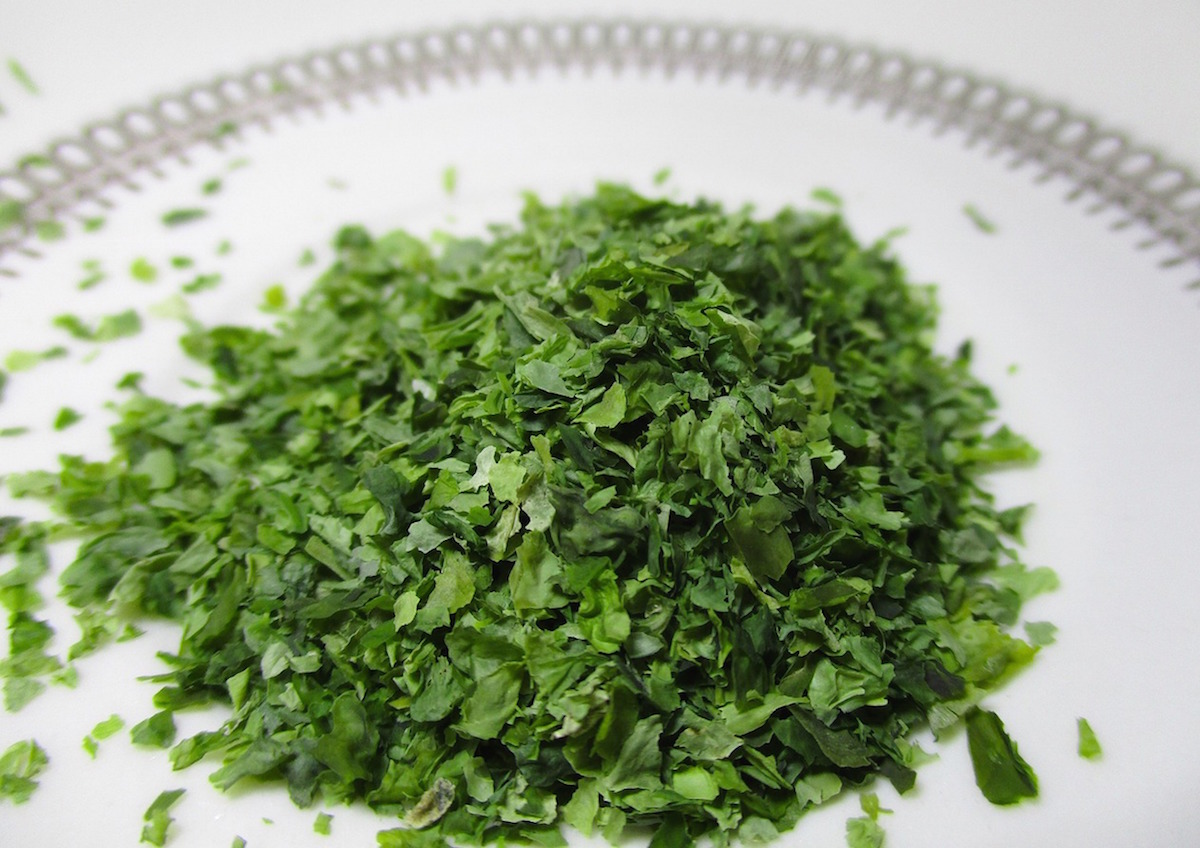
Seaweed as a “Superfood”
Seaweed is a nutrient-dense food that contains omega-3 fatty acids, amino acids, and iodine (Mahadevan, 2015), as well as vital vitamins and minerals that include calcium, potassium, magnesium, and iron. Omega-3 fatty acids are essential for the development of our brains (and are thought to reduce the risk of coronary heart disease) (“How eating fish helps your heart,” 2019) while iodine is an essential trace element that is deficient in many people’s diets.
Rather than absorbing its nutrients through roots, seaweed sources its nourishment through fronds – leaf-like structures that radiate from a “holdfast” that attaches to the rocks below (“Seaweed sustainability – The future of food,” n.d.). Seaweed grows at a much faster rate than most land plants, which means that when it’s harvested sustainably and at the right time in the plant’s life cycle, it will regrow rapidly, continuing to remove carbon dioxide from the atmosphere in the process.
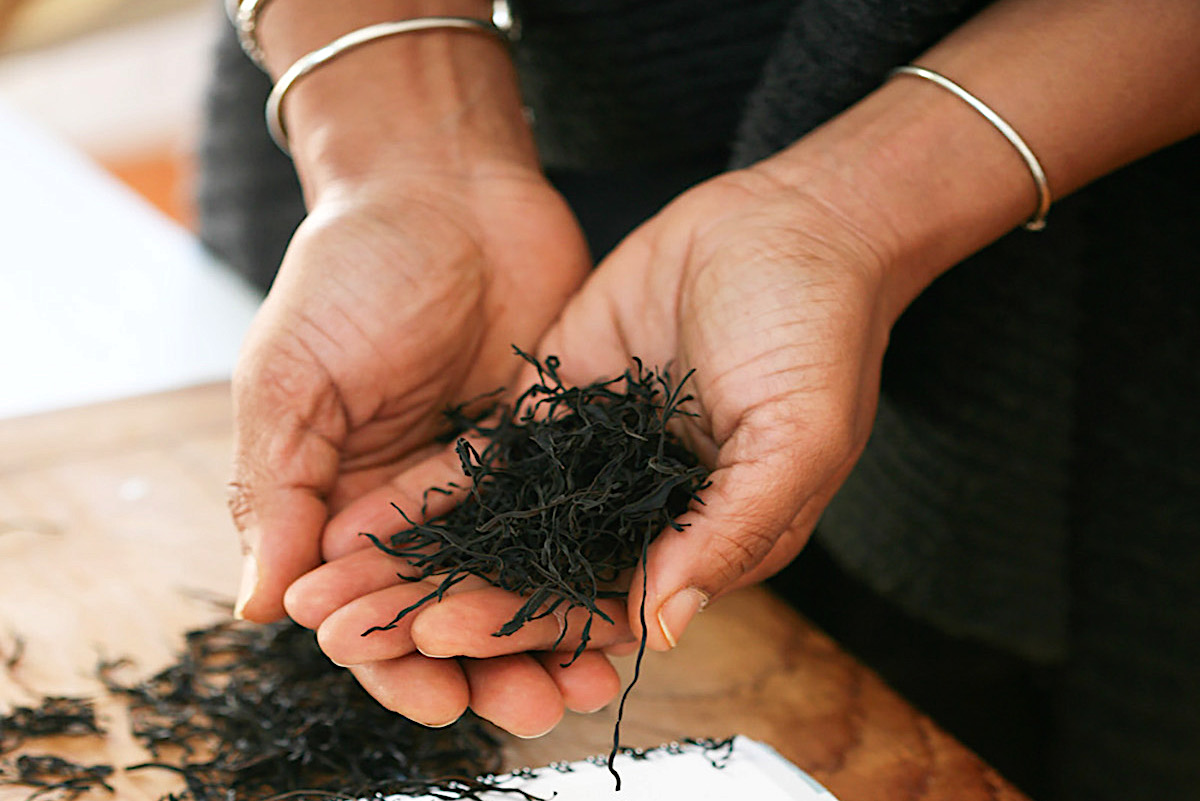
Seaweed and Our Environment
Seaweed comes in a multitude of species, shapes, and textures, as well as colors that range from red to brown, green, and black. It grows in all coastal climatic zones, relying on inorganic nutrients, such as phosphorus and nitrogen, for its growth. It plays an active role in filtering excess nutrients from agricultural run-off and, as a carbon sink, has the ability to reduce ocean acidification and mitigate the effects of climate change. This goes a long way in protecting the ecosystems critical to the survival of our ocean’s beautiful marine species—from majestic marine mammals to interesting sharks and fish.
Seaweed has another environmental benefit that is actively being explored—its ability to reduce the methane emissions from cows. Researchers at James Cook University in Australia have found that by adding just 2% of dried Asparagopsis taxiformis (a red macroalgae) to the diet of cattle, their methane emissions can be reduced by over 99% (Kinley, de Nys, Vucko, Machado, & Tomkins, 2016). The finding has the potential to drastically reduce the carbon footprint of the cattle industry, but only if the algae can be farmed on a large enough scale.
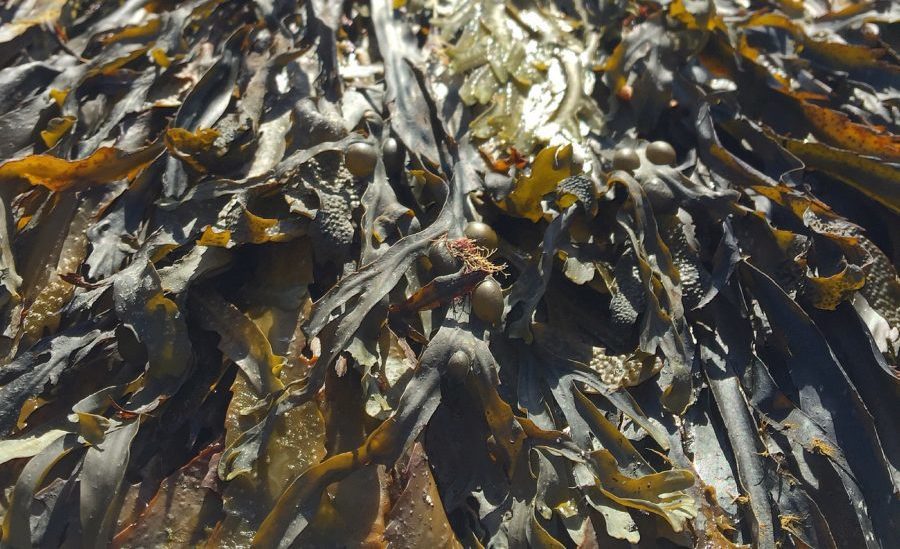
Sustainably Harvesting Seaweed
With seaweed offering so much nutritional value as a food source and playing a significant role in combating environmental degradation, it might be time to embrace this humble marine plant. Abundant in flavor, sustainable seaweed can be eaten in a variety of ways, from dried nori to spirulina smoothies. Or, add seaweed as a flavor-enhancing ingredient to soup stocks. If you like soup, you may want to check out this Nourishing Herbal Soup Seasoning Mix. Seaweed is a great substitute for spinach or lettuce in salads and can be transformed into everything from tapenade to seaweed crisps and even seaweed brownies!
But before you forage for any type of seaweed, you need to check the regulations in your jurisdiction about what is permitted (and what’s not). In some places, you may be allowed to harvest seaweed that’s still attached to its holdfast. While in other areas, only collecting beach-cast seaweed (that’s come off the plant) is permitted.
You should only forage in coastal areas that are relatively clean and non-toxic. So, steer clear of ocean outfalls! Most species of seaweed have their biggest growth spurts in summer and spring. So, if you want to stick to sustainable seaweed, these are the best times to forage and collect for human consumption as the seaweed will be at its youngest. If you’re harvesting seaweed still attached to the plant, take a sharp knife with you so that you don’t unnecessarily damage the rest of the plant, and only take a little from each plant. This way the plant can regenerate. Remember, seaweed provides habitat for a variety of organisms whose survival you don’t want to threaten.
If you’re collecting seaweed that’s come off its holdfast, only take the freshest you can find (ideally that’s been washed ashore since the last tide). Search for a place where the seaweed is growing and find bits that have been ripped off naturally by the action of the waves. Beach-cast seaweed that isn’t fresh can still be collected to create fertilizer for your garden.
All seaweed should be thoroughly washed in a bowl of fresh water a few times before being consumed or cooked. Different species require different preparation methods, so check online for recommended cooking applications and times before consumption. By harvesting seaweed sustainably, you’re not only getting a free source of nutritionally-rich food, but supporting your coastal ecosystem to flourish for generations to come.
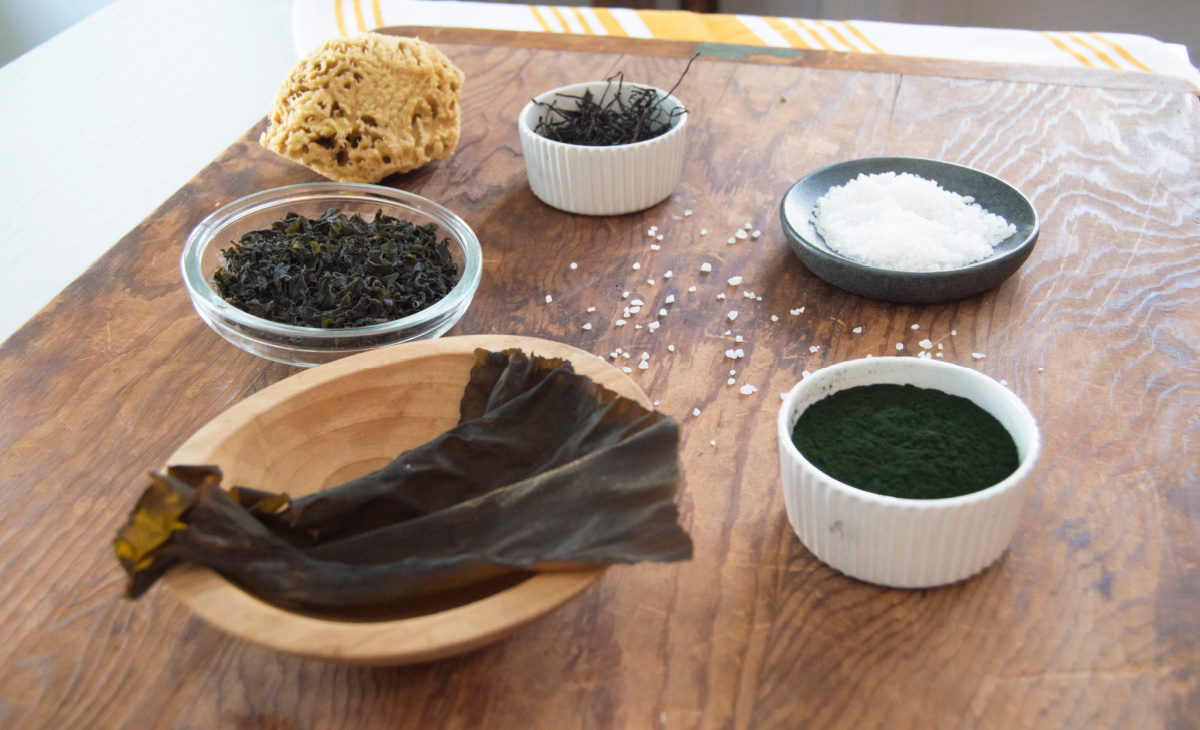
Where to Buy Sustainable Seaweed
When trying to source seaweed from your local grocery store consider looking in the international foods aisle, or even better yet – in an Asian grocer! However, if your local grocer doesn’t stock international products and there aren’t any Asian grocers near you, perhaps consider shopping online. When going this route, it is important to consider reputable sources such as Amazon. One of my personal favorites is Atlantic Sea Farms who not only have an entire online store, but also have physical stores, personal delivery, and open communication lines when products aren’t available in your area. A small-scale seaweed-focused herbalist would be great to support. Mermaid Botanicals is one. Herbalist Kristy Brendin is a supplier based in the Pacific Northwest region of the US. Maine Seaweed is a long-time supplier and small family-run business in Stueben, Maine. You may find you love to support either of these companies, or find another small-scale wildcrafter or producer who will ship to you.
Otherwise, some of the top-ranking seaweed companies include, Irish Seaweed and Acadian Seaplants Limited. So, depending on your location, perhaps email one of these entities and ask them who they deliver to in your area. Alternatively, see if you can A) order from them directly or B) find a shop directory if you feel your needs are more urgent.
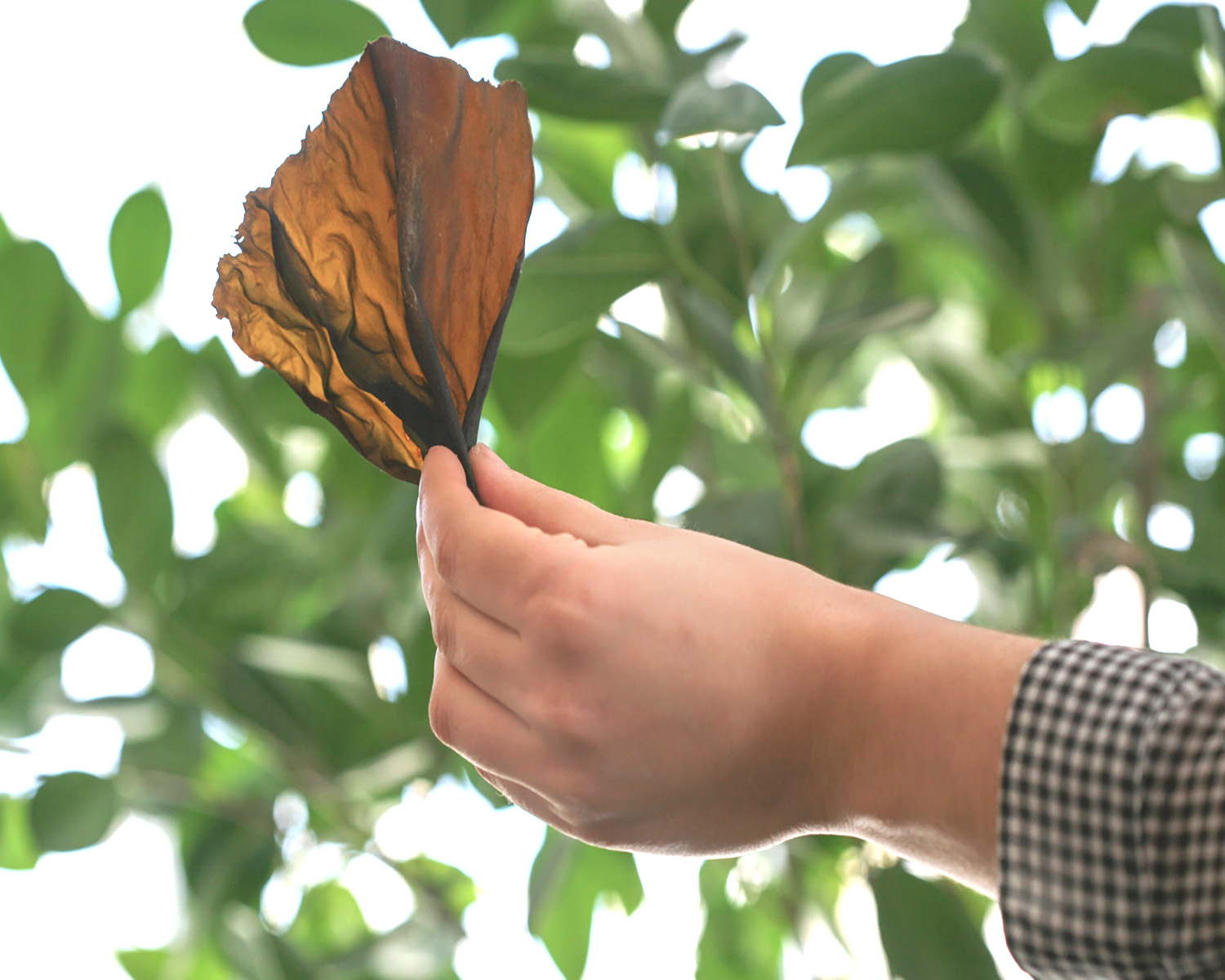
How Do I Know My Seaweed is a Sustainable Product?
One of the most important factors to consider is the season. Typically, seaweeds are harvested in the spring, meaning that any fresh seaweed snacks outside of this would have had to be imported. Other than that, the next factor to consider is where the seaweed is harvested. If the product is not local (i.e. it cannot be found within your district, or state) it is not as sustainable. The next best bet is to consider the actual entity. Before making your purchase, do your homework on the harvesting entity and look for sustainable harvesting practices, including techniques that avoid harm to other species, equitable working conditions, eco-friendly packaging, and any other information which may be considered sustainable. Lastly, supporting small businesses is a more surefire way to guarantee sustainability. Unfortunately, there is no global standard symbol for sustainability.
In Closing,
By creating a relationship with the owners and managers of local businesses it is easier to get a holistic understanding of what seaweed products you are getting and how they are being harvested. The responsibility, therefore, falls to consumers to become educated and make equitable decisions when it comes to their seaweed snack choices. That said, sustainable seaweed is kind to the planet and can make a delicious, nutritious addition to your soups, salads, smoothies, and even baked goods!
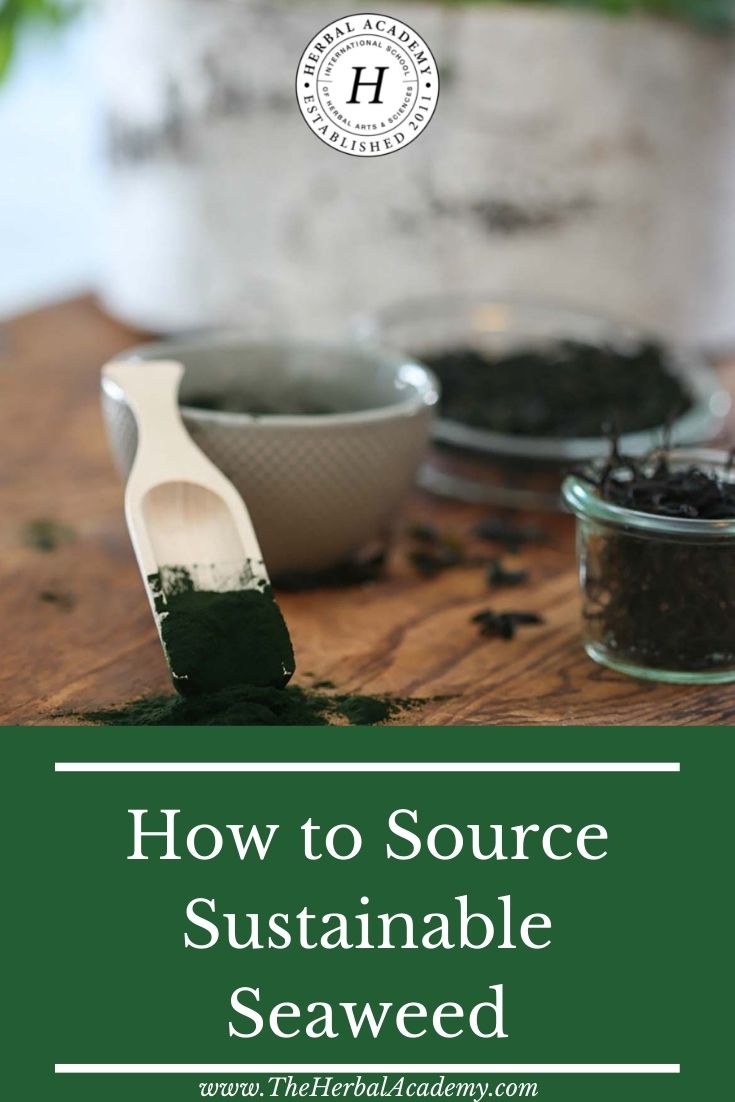
REFERENCES
Foley, L. (2020). Can coral farming save our dying reefs? [Online Article]. Retrieved from https://www.idiveblue.com/coral-farming-saves-dying-reefs/
“How eating fish helps your heart.” (2019). Retrieved from https://www.mayoclinic.org/diseases-conditions/heart-disease/in-depth/omega-3/art-20045614
Kinley, R. D., de Nys, R., Vucko, M. J., Machado, L., & Tomkins, N. W. (2016). The red macroalgae Asparagopsis taxiformis is a potent natural antimethanogenic that reduces methane production during in vitro fermentation with rumen fluid. Animal Production Science, 56(3), 282. https://doi.org/10.1071/an15576
Mahadevan, K. (2015). Seaweeds: a sustainable food source. Seaweed Sustainability, 347–364. https://doi.org/10.1016/b978-0-12-418697-2.00013-1
“Seaweed farming.” (2021). Retrieved from https://en.wikipedia.org/wiki/Seaweed_farming
“Seaweed sustainability – The future of food.” (n.d.). Retrieved from https://maraseaweed.com/pages/sustainability
Szabo, A. (2018). Seaweed – A sea of potential. Retrieved from https://sustainablefoodtrust.org/articles/seaweed-a-sea-of-potential/







